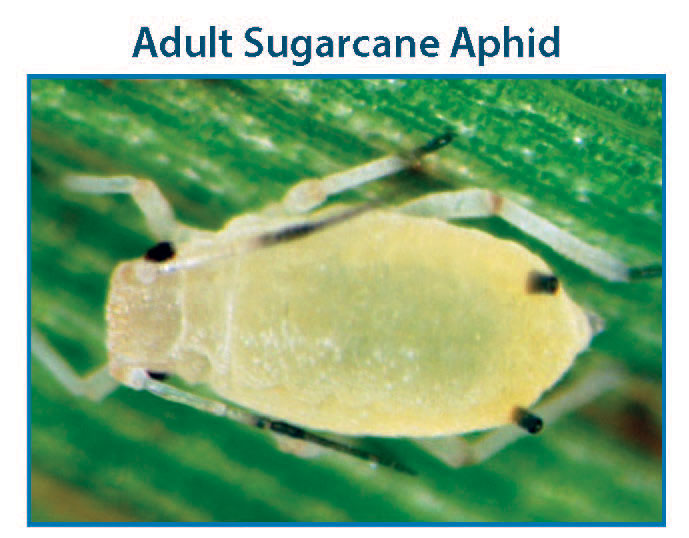
Sugarcane aphids, already requiring treatment in South Texas grain sorghum fields, will follow crop planting and maturity northward as the season progresses. No one can accurately predict how severe infestations will be so entomologists and consultants emphasize scouting is the most important preventive measure a producer can take.
Here’s how to scout sorghum for sugarcane aphids to develop a timely and effective control program, according to Texas AgriLife Extension entomologists and a Scouting Sugarcane Aphid scout card.
Once a week, walk 25 feet into the field and examine plants along 50 feet of row.
If honeydew is present, look for sugarcane aphids on the underside of the leaf above the leaf with honeydew deposit.
Inspect the underside of leaves from the upper and lower canopies from 15 to 20 plants per location.
Sample each side of the field as well as sites near Johnsongrass and mutant sorghum plants.
Check at least four locations per field for a total of 60 to 80 plants.
If no sugarcane aphids are found, or only a few wingless/winged aphids are on the upper leaves, continue scouting once a week.
If sugarcane aphids are found in lower- or mid-canopy leaves, increase scouting to two times a week. Use the Sampling Protocol and the Quick Aphid Checker to determine if aphid densities exceed the economic threshold.
TREATMENT DECISIONS
After determining that some sugarcane aphids are present in sorghum fields, producers or consultants must determine if treatment is economically justified. Here’s how to make that decision:
Examine the underside of one completely green leaf from the lower canopy and the uppermost leaf (or the leaf below the flag leaf at boot to heading) and estimate the number of SCA per leaf, using the Quick Aphid Checker, included in the Texas AgriLife Scout Card cited above.
Examine 2 leaves from each of 5 random plants per location. Repeat at 4 locations, for a total of 40 leaves. Use the Quick Aphid Checker to calculate the mean number of aphids per leaf.
If the field average sugarcane-aphid infestation is 50 to 125 aphids or more per leaf, apply an insecticide within 4 days and evaluate control after 3 to 4 days. Consider treatment at 50 aphids per leaf if limited to once-a-week scouting.
If the sugarcane-aphid infestation is less than the threshold level, continue scouting twice a week.
Check here for more information on sugarcane aphids in sorghum.
About the Author(s)
You May Also Like






